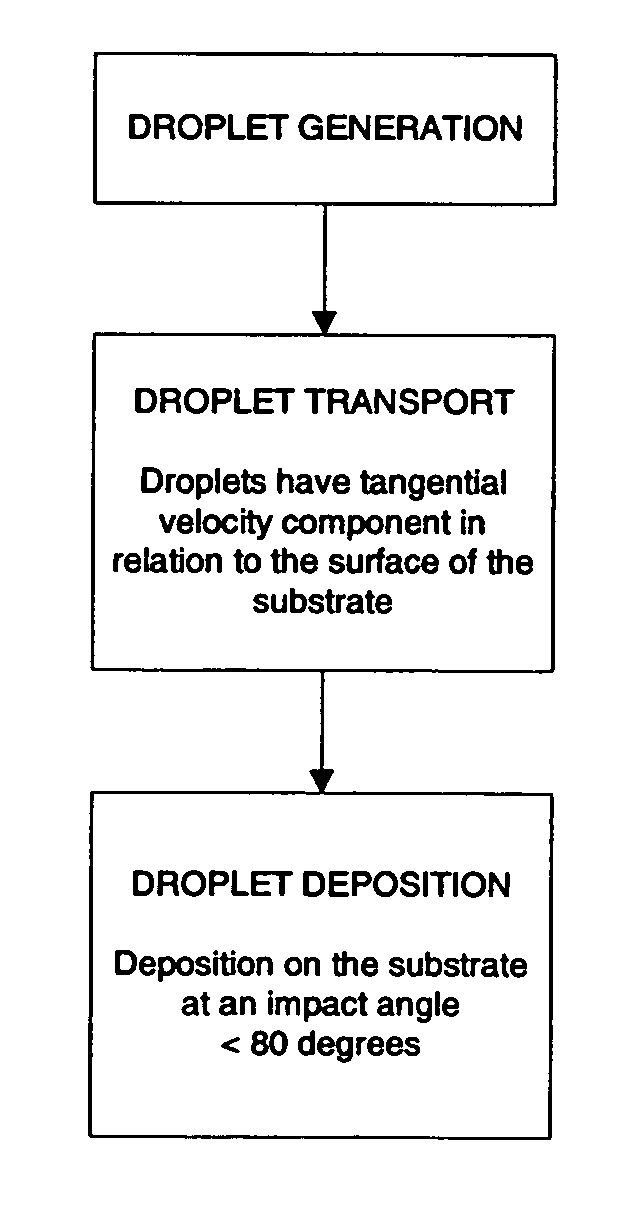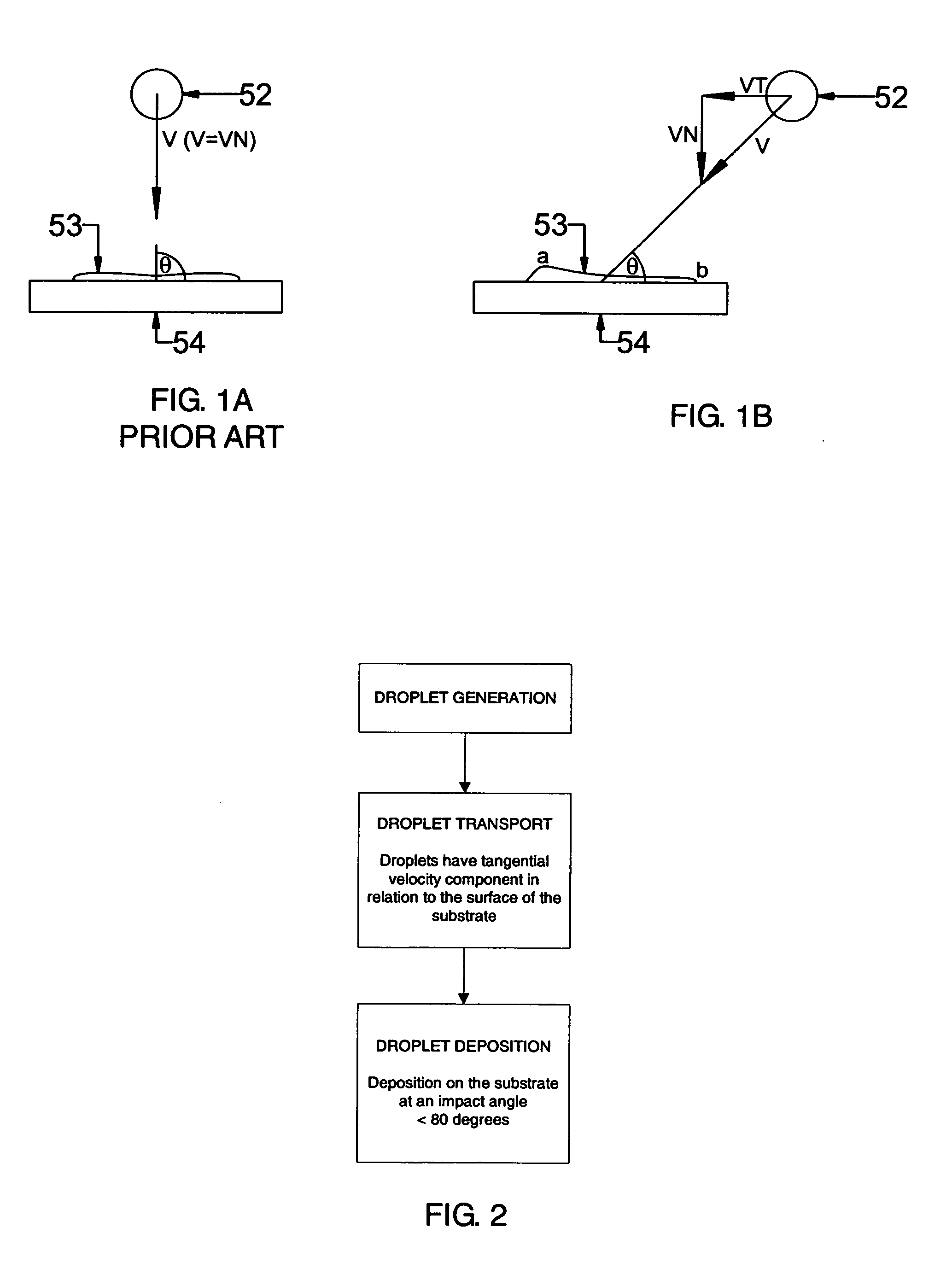Process for coating a substrate
a substrate and coating technology, applied in the field of coating a substrate, can solve the problems of inhomogeneous coating thickness and cracks, and difficult to produce porous coatings, and achieve the effect of being convenient to use and convenient to us
- Summary
- Abstract
- Description
- Claims
- Application Information
AI Technical Summary
Benefits of technology
Problems solved by technology
Method used
Image
Examples
example i
[0073]Several stents were coated according to the process of the present invention. A poly(vinylidene fluoride) PVDF HFP copolymer with a monomer composition of 80% vinylidene fluoride and 10% hexaflouropropylene (Solvay Advanced Polymers, Houston, Tex., USA) was used to coat the stents. The coating solution was prepared by dissolving the polymers in acetone, at five weight percent. Both the inside and the outside surfaces of the stents were coated. Care was taken so that the stents were coated at the same operating conditions. The swirl intensity was precisely adjusted to examine its influence on the resulting surface properties. Several scanning electron microscope (SEM) images were taken to visualize the surface morphology at different swirl intensities.
[0074]Stent #1 was coated at a swirl intensity of 0. The coating was applied according to the schematic representation of FIG. 1A so that the majority of the droplet hit the surface at an impact angle of about 90 degrees. FIG. 11A...
example ii
[0078]Several stents were coated according to the process of the present invention using the poly(tetrafluoroethylene) dispersion PTFE 307A (DuPont, Wilmington, Del., USA). The dispersion contains approximately 60% (by total weight) of 0.05 to 0.5 μm c resin droplets suspended in water and approximately 6% (by weight of PTFE) of a nonionic wetting agent and stabilizer. Both the inside and the outside surfaces of the stents were coated. The stents were coated at a swirl intensity of 0.3 according to the schematic representation of FIG. 1B. FIGS. 12A-C are scanning electron microscope (SEM) images of the coating morphology produced on a stent according to the process of the present invention at various magnifications.
[0079]Referring to FIG. 12A, a stent having a homogeneous coating with a comparatively large surface area and roughness is shown. Accumulation of excess material on the surface of the stent was not observed and the coating looked uniform.
[0080]To better visualize the morp...
PUM
| Property | Measurement | Unit |
|---|---|---|
| Velocity | aaaaa | aaaaa |
| Flow rate | aaaaa | aaaaa |
| Therapeutic | aaaaa | aaaaa |
Abstract
Description
Claims
Application Information
 Login to View More
Login to View More - R&D
- Intellectual Property
- Life Sciences
- Materials
- Tech Scout
- Unparalleled Data Quality
- Higher Quality Content
- 60% Fewer Hallucinations
Browse by: Latest US Patents, China's latest patents, Technical Efficacy Thesaurus, Application Domain, Technology Topic, Popular Technical Reports.
© 2025 PatSnap. All rights reserved.Legal|Privacy policy|Modern Slavery Act Transparency Statement|Sitemap|About US| Contact US: help@patsnap.com



